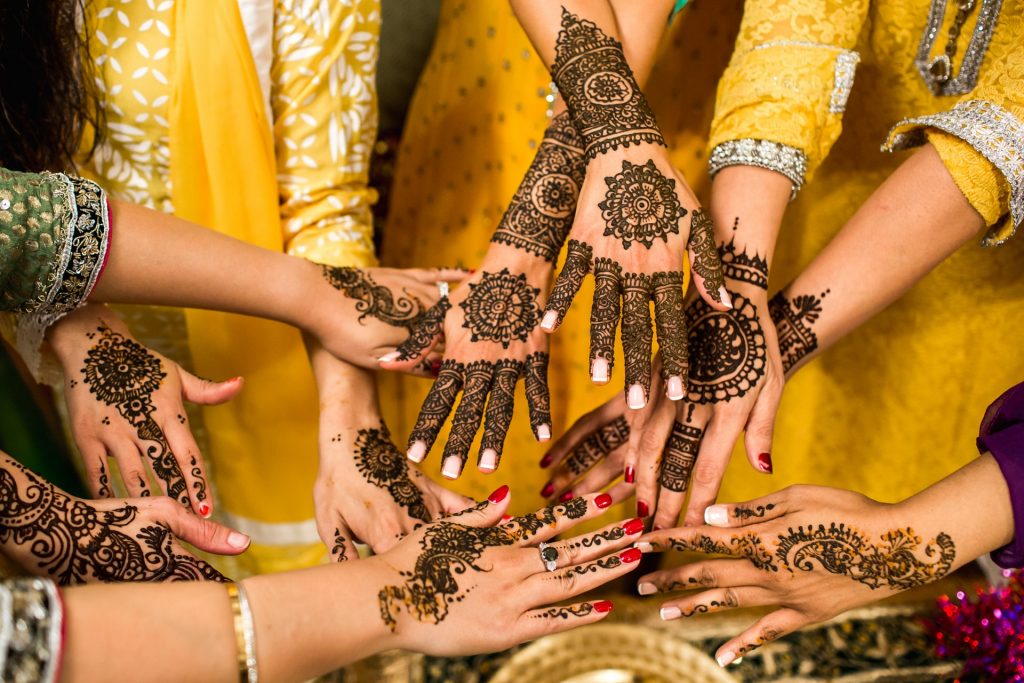In many parts of the world, there are more celebrations than just the wedding day itself. In some Indian cultures, particularly Hinduism, one of these traditions is the Mehndi party.
At this pre-wedding celebration, all the women closest to the bride come together in celebration of the upcoming nuptials. The bride has Mendhi (or henna) applied to her palms, the back of her hands, and feet, and guests can opt to have some henna done too.
Mehndi is an ancient form of body art, which originated in India and across South Asia and The Middle East. It is often red, after being applied and having set, and the bride and guests can choose from a variety of designs.
The paste used to create the body art is made of a plant which has leaves that contain a dying agent called Tannis.
https://www.instagram.com/p/CBScRhng24h/
The colour and patterns are significant. According to tradition, the deeper the colour of the bride’s mehndi, the more likely it is for her to have a happy marriage. Designs and patterns often symbolise luck, joy, love, and blessings and the bride commonly hides her groom-to-be’s name somewhere in the pattern.
In an interview with Byrdie, henna tattoo expert explains patterns and placements thereof in more detail. She said that henna applied to palms allows the person to receive good luck, adding that the application itself is what helps.
“Henna has a natural cooling effect when applied, which is said to have nerve-calming properties before the wedding day when placed on the hands and feet,” she explained, adding that “Commonly, the designs people get on their palms are the most intricate, and sometimes draw out a story using symbols and illustrations of the bride and groom”
Henna applied to the top of the hand specifically indications protection.
The exact history and origin of this tradition have been difficult to trace, due to migration and cultural integration. It is, however, commonly argued that the application of henna has happened for more than 5 000 years. Some suggest it comes from ancient India, while others say it was brought to India by Egyptians.
According to Aroha International, evidence shows that the civilisation of Babylonia made use of henna to decorate women on special occasions. They claim that the earliest text which speaks of henna, with regards to marriage and fertility, is from the Ugaritic legend of Baal and Anath.
Others, including the Huffington Post, have reported that its use was made popular by Cleopatra in Ancient Egypt, as she adorned her body with it. According to the publication, henna was used to paint the nails of mummies before they were buried.
Despite its unclear origins, henna is still very popular today. Have a look at some modern henna designs, to help you understand what it’s all about.
https://www.instagram.com/p/CBi68M2BxwE/
https://www.instagram.com/p/CAdCi-0J6db/
Image: Unsplash

